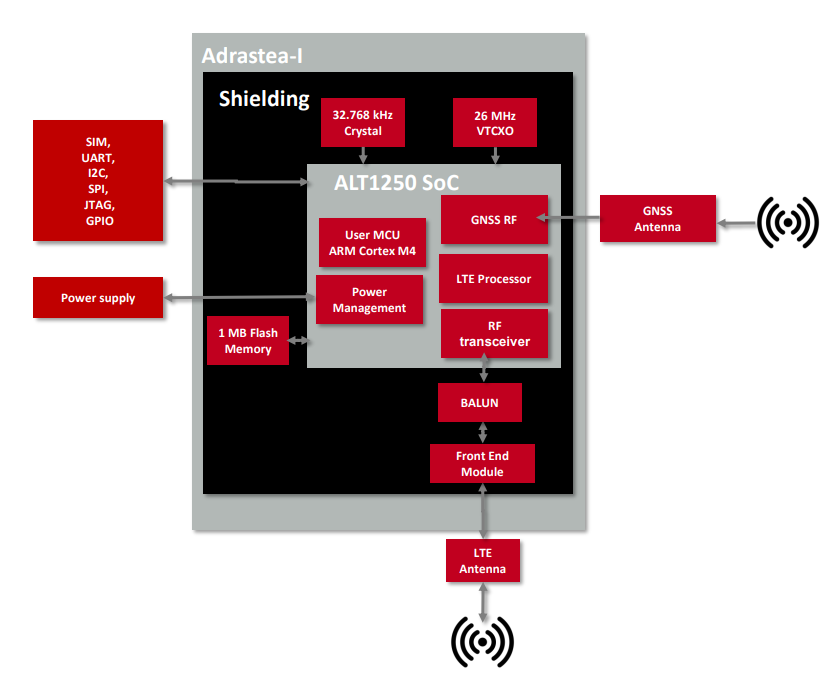In the era of rapid technological advancements, cellular technology has become an inherent part of our daily lives. From providing connectivity to smartphones to enabling data transfer and advancing IoT applications.
Cellular modules are an integral part of a wide range of products, such as wearables, smart devices and IoT devices. They serve as a communication interface between the device and the cellular network, enabling data transmission. With the advent of the 5G network, cellular modules are becoming increasingly important in the development of consumer electronics and industrial applications.
This article sheds light on Adrastea-I, one of Würth Elektronik’s cellular modules that is a high performance multi-band LTE-M and NB-IoT module for IoT connectivity.
The importance of cellular technology
Cellular technology is a wireless communication technology that enables devices to transmit and receive data over a network. With new network standards like 5G and LTE-M, the role of cellular modules has become even more important.
Benefits of cellular connectivity:
- Cost-effective
- Real-time data
- Global coverage and roaming
- Secure and reliable transmission
- Remote management and analysis
- Secured connectivity with a strong authentication of IoT devices
Therefore, Würth Elektronik has developed a module with a multi-band support that can be operated through one of two cellular communication technologies – LTE-M and NB-IoT. This enables the support for international, multi-regional coverage.
Adrastea-I – LTE-M / NB-IoT Cellular Module
The Adrastea-I module is designed for extremely low power usage, small footprint, and improved coverage. Due to its compact size, it is ideal for wearables and other applications with limited space.
The GPS and GLONASS satellite systems are both supported by the integrated GNSS in the Adrastea-I module. It is excellent for asset tracking applications with infrequent position updates thanks to integrated GNSS.
The high-performance Sony Altair ALT1250 chipset serves as the module’s foundation. The Adrastea-I can be programmed to use NB-IoT instead of LTE-M, for instance, in areas where LTE-M coverage is unavailable. It may be upgraded to 3GPP Release-14 and is compatible with Release-13.
The embedded ARM Cortex-M4 processor is exclusive for customer application software, with 1MB Flash, and 256 KB RAM. On the embedded ARM Cortex M4 MCU, Sony Altair offers a software development kit (SDK), sample code examples, documentation, and tools to speed up innovation and product development.

Features:
- LTE Cat M and NB-IoT mode selection
- GPP Release 13 compliant, Upgradable to Release-14
- Small form factor: 13.4 x 14.6 x 1.85 mm
- Integrated GNSS (Supports GPS & GLONASS)
- Integrated User MCU (ARM Cortex-M4, 1 MB Flash Memory, 256 KB RAM)
- Output Power class 3 (23 dBm)
- Low power consumption and longer battery life
- Supports 3GPP TS27.005, 27.007 and Würth Elektronik enhanced AT commands
- Protocols: IPv4/IPv6, TCP/UDP, HTTP/HTTPS, TLS/DTLS, MQTT, LWM2M
- Interfaces: USIM, UART, I2C Master, SPI Master, GPIO, ADC, JTAG
- LTE-Cat.M Supported Bands: B2/B3/B4/B5/B8/B12/B20/B25/B26/B28
- LTE-Cat.NB-IoT Supported Bands: B3/B5/B8/B20/B28
Applications:
- Industry 4.0 and smart factories
- Automotive and transport
- Smart city and smart home
- Agriculture and healthcare

In terms of cellular certification, the Adrastea-I module is certified by Deutsche Telekom which allows for a rapid integration to finished goods without the need for extra labelling, industry-specific certifications (GCF), or operator approvals.
Adrastea-I is also a GCF certified module. Major advantage with GCF certified modules integrated in end IoT applications is that it reduces efforts for industry and operator specific certifications.
Whether a customer needs additional certifications or not, Würth Elektronik provides solutions for different network providers. For more information, check the user manual here or watch Würth Elektronik’s webinar on accelerating migration of cellular IoT products into 5G.
Why choose Adrastea-I for your IoT connectivity?
The Würth Elektronik LTE-M / NB-IoT Cellular Module represents a significant milestone in the realm of cellular technology, empowering IoT innovation across industries. With the transformative potential this module holds it ultimately contributes to the growth of a connected and intelligent future.











